Cecilia Manguerra Brainard: An Interview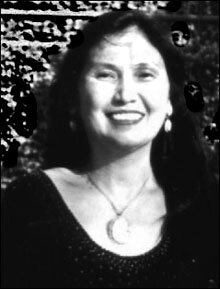 byDaniel M. Jaffe
Cecilia Manguerra Brainard is one of the few authors whose first novel captured readers’ imaginations across international boundaries. Her novel about the Japanese invasion of the Philippines during the Second World War, was initially published in 1991 in the Philippines as Song of Yvonne (New Day Publishers). Dutton brought the novel out in hardcover in the U.S. as When the Rainbow Goddess Wept (1994), and Plume followed with a paperback edition in 1995. University of Michigan Press then brought out another edition in 1999. This portrayal of a girl’s blossoming into young womanhood “interweaves realistic events with myths of women fighters and goddesses, as well as fantastic dreams . . . Brainard’s appealing characters are larger than life, people who change before our eyes, yet remain utterly convincing . . . A fast-paced, sensitively written first novel.” (Kirkus Reviews.) For Cecilia, this text was merely the beginning. She is now the prolific author, editor, and co-editor of a dozen books, including Magdalena, Acapulco at Sunset and Other Stories, Philippine Woman in America, Woman With Horns and Other Stories, Growing Up Filipino: Stories for Young Adults, Fiction by Filipinos in America, Contemporary Fiction by Filipinos in America, Behind the Walls: Life of Convent Girls, and most recently, A La Carte: Food & Fiction (Anvil Publishing, 2007). Awards she’s earned include a California Arts Council Fellowship, a Brody Arts Fund Award, the Outstanding Individual Award from her birth city, Cebu, Philippines, and a Filipinas Magazine Award for Arts. 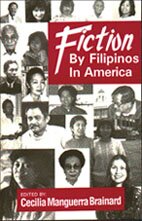 In the Introduction to one of her anthologies, Fiction by Filipinos in America (New Day Publishers, 1993), Cecilia speaks about seeking a “Filipino voice.” Yet the stories in that anthology are so varied that I wondered how Cecilia might characterize a Filipino literary voice. She explained, “When I was a beginning writer I had been severely critiqued by a woman who said my story could have been written by a Sacred Heart graduate in New York. After recovering from the hurt, I thought about her comment and realized she was talking about voice, that my voice had been off. I thought and studied ‘voice’ for a long time reading such writers as Gabriel García Márquez, E.M. Forster, Dostoevsky, and other ‘greats’ wondering about their voice and how this could be transmitted even with translated works. In the meantime I also experimented with my own writing, choosing Filipino and Filipino-American themes, experimenting with dialogue—I’m writing in English but my characters are speaking in Tagalog or Visayan or Spanish. Eventually I figured out that character is the most important, and language is a tool—at least this is my theory. “There generally is some aspect of ‘educating my readers’ in most of my books; and in fact many of them continue to be used by educators. I do not set out writing them to educate—that sounds a guaranteed way to bore your readers. I myself am usually interested in what I’m writing about—World War II in my first novel (When the Rainbow Goddess Wept), more history in my second novel (Magdalena). I do research to create as accurate a world possible in my stories (or as credible as possible)—and so I’ve got the dates and the places and historical events—and in fact then, this is educating my readers, aside from entertaining them. I was so amused to learn that When the Rainbow Goddess Wept was used for years in a political science class. 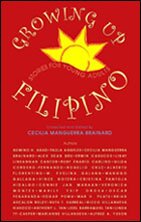 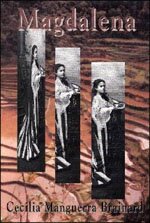 What inspired Cecilia’s historical novel, Magdalena (Plain View Press, 2002), a family saga of three generations of women in 20th-century Philippines? “Magdalena was a pain in the butt to write,” she said. “After writing my first novel I started a second novel. Because the first one was linear, that is, it starts at the beginning of World War II and ends when the war ends, I expected I’d write another linear piece. But the second novel kept fighting me! It was flipping about in terms of time, and then there were numerous characters presenting themselves. While I was writing it, I knew things were out of control. It took years, and finally I gave up on the second novel and decided to salvage what I could and turn them into short stories. I was working on this when it occurred to me that I could use those ‘short stories’ as chapters of a novel. I am not sure what inspired me really because the characters were the ones who pressed themselves on me. But perhaps Philippine history inspired me, and Filipino women also inspired me.” 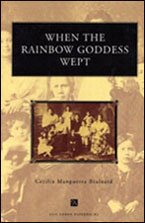 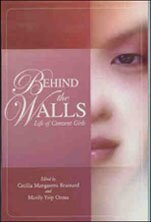 The influence of religion can be felt in much of Cecilia’s work. One memorable example takes place in When the Rainbow Goddess Wept, when the character of Doc Mendez considers allowing himself to be crucified on Good Friday. “Oh, Dan,” said Cecilia, “I went to Catholic school from kindergarten all the way to college, and Filipino culture is so tied in with Catholicism, so much so that religion seeps out of me. And yes on a personal level, Catholicism is important to me, and I read Thomas Merton, C.S. Lewis, lives of saints, etc. But I’ve only done a lot of these religious readings in recent years, many years after the writing of Song of Yvonne (When the Rainbow Goddess Wept). Religion was already ingrained in me even when I was young. You have to be in the Philippines to witness the number of people in churches daily—overflowing, and during Christmas and Lent there are numerous rituals, including the flagellation and crucifixion as referred to in Doc’s Crucifixion.” Speaking of Behind the Walls: Life of Convent Girls (Anvil Publishing, 2005), which Cecilia co-edited with Marily Y. Orosa, Cecilia added, “Behind the Walls was a kind of offering Marily and I made to the Catholic convent schools in the Philippines.” 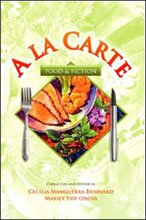 “We looked for character-driven stories, which had something to do with eating or food. In some cases the contributing authors had been inspired by particular recipes, in others, we had to find the recipes for the stories. The collection in A La Carte is quite good, and so are the recipes.” |
